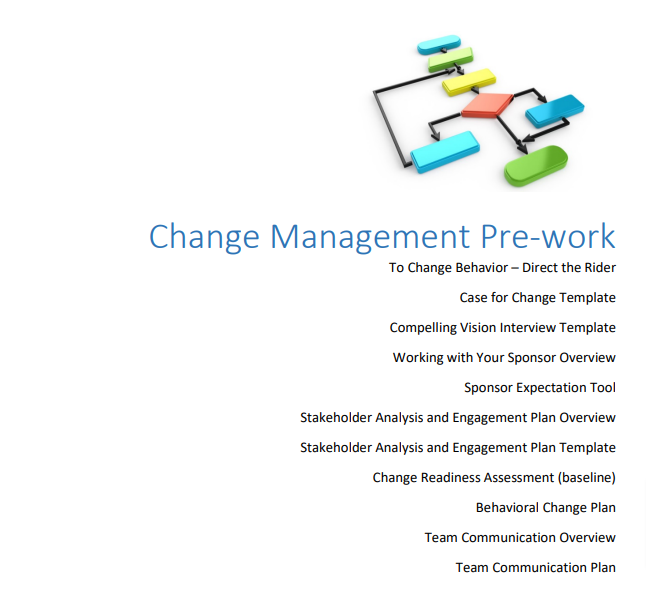Learn practical strategies for driving organizational change, big or small, with this toolkit by UC Berkeley.

Change Management Toolkit
*This resource is recommended for its educational value and is not an EDU Fellowship original work. All rights belong to the original creators, UC Berkeley.
Here's what you'll find inside:
- Behavioral Direction: Insights on guiding behavior changes for impactful results.
- Vision Crafting: Techniques for creating visions that inspire and drive action.
- Stakeholder Engagement: Effective methods for analyzing and engaging with stakeholders.
- Communication Skills: Advanced tools for crafting compelling team communications.
- Readiness for Change: Strategies to assess and prepare your organization for change.
- Planning Behavioral Change: Practical steps for planning lasting behavioral transformations.
- Maintaining Momentum: Tips on keeping the energy high and the change moving forward.
💜 Why it Resonated
The toolkit stands out because it emphasizes understanding the 'why' behind change, not just the 'how.' It's a guide for those who want to be more than just managers of change – for those who aim to be leaders who can dive into the complexities of human behavior and organizational dynamics.
💡 The Big Ideas
To change behavior, this toolkit discusses three things we must do.
- Direct the Rider:
- The Rider is the rational side of the brain. It falls into analysis paralysis easily and needs a clear vision of where to go. To overcome this, highlight 'bright spots' or successful examples of how others achieved success that can be emulated during the change process.
- Motivate the Elephant:
- The Elephant is the emotional side of the brain. When the rider and Elephant disagree, the Elephant will win. Overcoming this involves using emotional appeals and motivational techniques to overcome the resistance and energy needed to win the race.
- Shape the Path:
- To direct the Rider and Elephant, we need to make the process easier by tweaking the environment and building habits that support the desired change, making it more likely for the change to be embraced and sustained.
Other Supporting Ideas:
- Crafting a Vision: A crucial step in change management is developing a clear and compelling vision. The toolkit guides how to articulate this vision in a way that is understandable and motivating for all stakeholders. This vision serves as a north star, guiding the direction of the change effort.
- Stakeholder Engagement: Effective change management requires active engagement with all stakeholders. The toolkit offers strategies for identifying key stakeholders, understanding their perspectives and concerns, and involving them in the change process. This engagement is crucial for gaining support and mitigating resistance.
- Communication Plans: The toolkit highlights the importance of developing a strategic communication plan that addresses change's rational and emotional aspects. It involves crafting clear, consistent messages that resonate with different audiences within the organization.
- Sustaining Change: Finally, the toolkit addresses the challenge of sustaining change over time. It provides tools and techniques for embedding the change into the organization's culture, ensuring that the new behaviors and practices become the norm.
🎯 My Key Takeaways
Change Management is a Behavioral Journey 🦋
Change isn't just a process but a behavioral journey. It's about understanding and influencing how people think, feel, and act in the face of change.
Action Steps:



